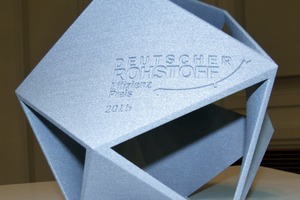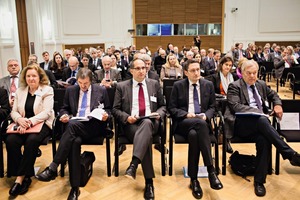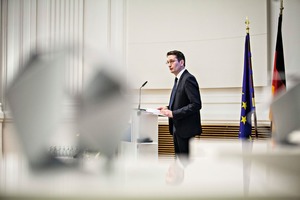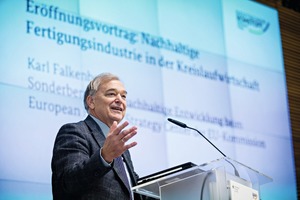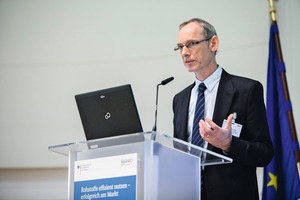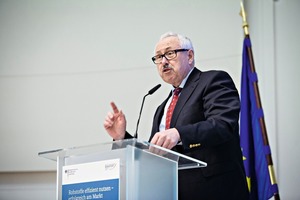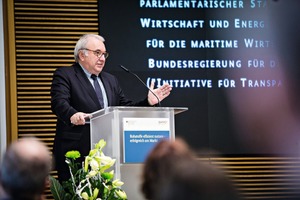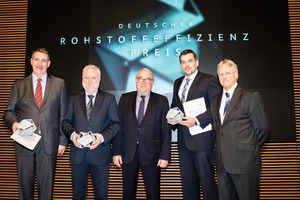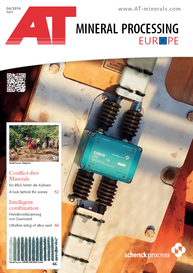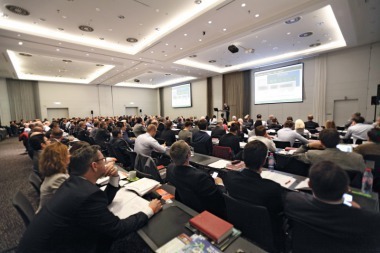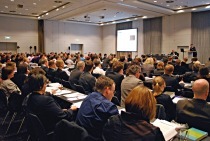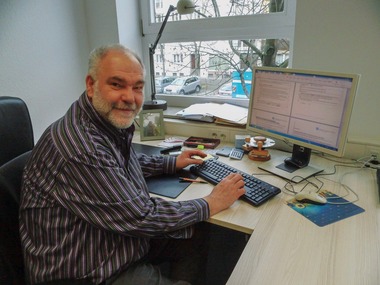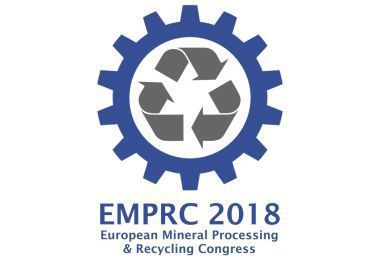Examples of inventiveness and innovations of German enterprises
The ceremony of this year’s German Raw Material Efficiency Award, which was held on December 4, 2015 in the Federal Ministry for Economic Affairs and Energy (BMWi) in Berlin, was expected with excitement. Almost 200 invited guests were present at the ceremonial handover taking place for the fifth time on the occasion of the trade conference entitled “Using raw materials efficiently - Successful on the Market”. The competition was first organized in 2011 by the BMWi in cooperation with the German Mineral Resources Agency (DRA) with the goal of emphasizing the significance of the raw material efficiency and its effect on the economy. The intelligent use of raw materials - whether through the increase of raw material efficiency, substitution or recycling - contributes to the safeguarding of raw materials in Germany. The prize is awarded to small and medium-sized enterprises and research institutes for the development and implementation of raw material efficient products, processes or services as well as for application-oriented research results.
Trade Conference
The trade conference, which was opened by Stefan Schnorr, department manager of the BMWi, provided an interesting program. He pointed out that Germany should become the leading innovation location, as innovation is the driving factor for the economic development of a nation. Raw material prices are currently decreasing - but this situation will certainly change again, and Germany will have to brace for this change. Recycling is a domestic raw material source that needs to be utilized and that should be complemented by a resource-saving production process. Raw material efficiency requires innovative research and development. Likewise important is the decoupling of economic growth from savings in raw materials - in Germany, this has already been accomplished.
Karl Falkenberg, European Comission Brussels, dedicated his opening speech to “Sustainable manufacturing technology in the recycling economy”. He highlighted the implementation of the sustainability concept on a national, European and global level, emphasized Germany’s pioneering role, but also pinpointed to the need of many European and non-European countries to catch up in this regard. The closing of dumps, recycling, eco-design, separated waste collection, reuse and repair as well as demineralization of products are only a few keywords to characterize the EU’s new way towards resource conservation and raw material efficiency.
The results of the funding measure r³, which was initiated by the Federal Ministry of Education and Research (BMBF) and intended to safeguard the raw material basis, in particular for strategic metals, were presented by PD Dr. sc. Lothar Mennicken, BMBF. He, too, had to assert that an economic implementation of the research results in the field of recycling, in particular of strategic metals, is hardly taking place, instead, due to decreasing raw material prices, substitution is more current. He criticized that the potential of renewables had been excessively overestimated. The negative effects of the dramatic price erosion in raw materials (e.g. petroleum ~ 43 %, iron ore ~ 53 % 10/2015 compared to 11/2014) on the recycling industry were another important topic of the lecture held by Dr. Peter Buchholz, DRA/BGR, Berlin. However, one ray of hope was the known existence of raw material price cycles, three of which had occurred in the past 60 years alone. The price increase of recent years was based on the rapidly rising need, above all in China, but economy is currently stagnating with all mentioned implications.
This topic was also an important point of discussion and inevitably led to the question of what would actually be the incentive for the recycling industry. The answer was seen in the logic of the economic system already described, i.e. the repeated increase in prices.
The concluding lecture was held by Michael Ziesemer, President of the Central Association of Electrical and Electronic Industry e.V., Berlin, who also named digitalization as the source of resource efficiency besides recycling. Today, the import of raw materials for the electronic industry amounts to over 90 % with 50% being attributable to material costs. With this, recycling is still an important market for the electronic industry. And despite the current stagnation, the demand for raw material will rise again, merely due to electric mobility or the need for heat pumps. The speaker gives starter and industrial batteries as an example for excellent recycling, as they reach a recycling rate of almost 100 %.
Award Ceremony
Subsequently, the Parliamentary Secretary of State at the BMWi, Uwe Beckmeyer, presented the 2015 German Raw Material Efficiency Reward. It was not an easy task for the 13 judges of the panel – representatives of economy, science and society – to nominate the following six candidates out of 30 submitted applications:
● Loser Chemie GmbH, Langenweißbach – Recycling of thin-film modules
● QASS GmbH, Wetter - Measuring system saves zero-defect parts in production)
● IAS GmbH Industrie Automationssysteme, Weil der Stadt – High-performance cooling for sensors
● Maija Frästechnik, Ennepetal – Milling instead of grinding with the famous hand-held angle grinder
● C³-Carbon Concrete Composite e.V., Konsortialführer TU Dresden, Dresden – Raw material efficient alternative for reinforced concrete
● Fraunhofer Project Group Materials Recycling and Resource Strategies IWKS Hanau, Alzenau, in cooperation with Impuls Tec GmbH, Dresden – More efficient recycling for high-tech products.
Among these nominations, two medium-sized companies and one research institute were the selected winners, who were awarded with the sought-after prize.
In the competition category, these were:
Maija Frästechnik GmbH:
● With the help of milling rings, which can be installed in commercially available hand-held angle grinders, materials such as Al, Cu, Ti, wood or steel can be machined in a clean, cool, dust- and residue-free way. In comparison to grinding, the removal rate is higher by 70 %. Due to dust-freeness, the risk of grinding burn, explosions or health burdens can be avoided.
IAS GmbH Industrie Automationssysteme:
● Development of innovative high-performance cooling systems for commercially available inductive or microwave sensors in the temperature range of up to 800 °C for the monitoring of metal and glass melt levels in metallurgy, from material recovery to the production of semi-finished products. With this, it is possible to avoid the waste of energy (usually about 20 %) caused by opening the doors of the furnaces for visual level measurement.
In the competition category of research institutions, the award went to:
C³-Consortium, Consortium Leader Technical University of Dresden:
● Development of a new raw-material efficient, durable construction material, in which the non-corroding material carbon is used – either in the form of bars or as woven textile mats - instead of steel. This so-called carbon concrete composite is not only suitable for new buildings, but also for the renovation of building structures. In comparison to steel, the carbon concrete composite with a yarn thickness of 2 mm (thread size 10 µm) requires only 1/5 of the concrete, while offering equivalent strength. Service life is estimated at over 200 years. The material has already been applied, as for example in the ceiling of the dining room in the tax office in Zwickau. Over the next few years, the product shall be further developed to reach market maturity.
The award winners expressed their joy at this distinction. Finally, Uwe Beckmeyer once more underlined that these three awards were excellent examples of efficient resource management at the high-tech location Germany.
The fact that this prize wasn’t awarded to a company that successfully dedicates itself to the recycling of wastes – as for example the nominated Loser Chemie GmbH, which had completed research and proven feasibility with the extraction of over 10 kg of indium and more than 100 t of glass from thin-film modules – is certainly the consequence of the initially described slump in recycling due to the drastic reduction in raw material prices. But here, too, the saying applies: „And yet they (the raw material prices) move!“

